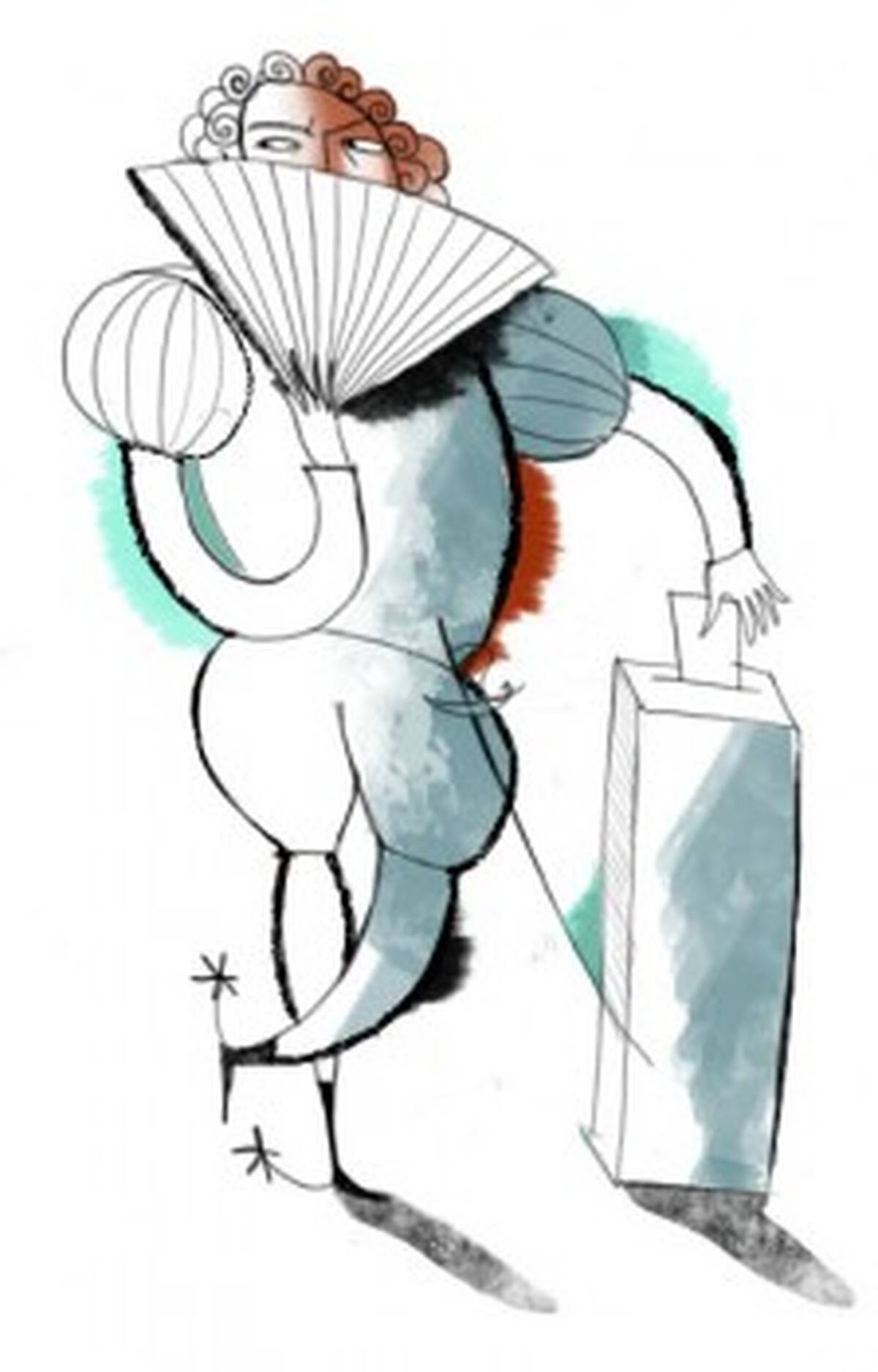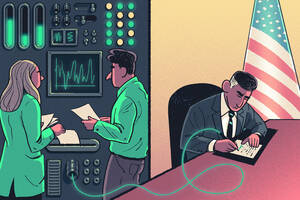Politics & Elections May 5, 2014
Happy Voters or Happy Outcomes?
In corporations, academia, and the papal conclave, transparent voting and voter privacy interact in surprisingly complex ways.

Yevgenia Nayberg
In the present era of extreme partisanship, Congressional leaders in search of political advantage frequently force votes on controversial issues that can embarrass opposition members because they go counter to the views of most of their constituents.
Since the vote of every member of Congress is recorded publicly, individual legislators cannot prevent the people in their districts from learning how they vote on such sensitive matters. Officials in other organizations, such as corporate boards, academic faculty meetings, and even the Roman Catholic Church’s conclave to elect a Pope, have more choice in the matter of voting. They can—and often do—choose to keep their votes secret.
The tension between openness and privacy has attracted the attention of Ronen Gradwohl, an assistant professor of managerial economics and decision sciences at Kellogg. An expert on privacy issues and their effect on strategic interactions, he has developed a model that examines the relationship between voting transparency and voters’ privacy. “The issue is that of the quality of voters’ decisions versus the voters’ welfare,” he says. “If there weren’t privacy concerns, there would be no tension between the two.”
His model, based on game theory, illuminates the complexity of the relationships between openness, privacy, and effective decision making. “Figuring out what information to publicize about voting can have unexpected effects on behavior,” Gradwohl explains. The model reveals one particularly surprising result. “If individuals want to preserve their privacy,” he says, “releasing less information about their votes isn’t necessarily better.” Indeed, he continues, “restricting the amount of information disclosed about the votes may actually be harmful.” Those findings have practical importance for organizations deciding what form of voting to adopt.
Reasons for Secrecy
Individuals have several reasons for wishing to maintain the secrecy of their votes. Elected government officials might be disinclined to vote publicly against their constituents’ wishes, whatever the merits of the issue at hand. Corporate board members might worry about taking a stance unpopular with their companies’ CEOs and shareholders. Similarly, untenured faculty members may hesitate to let department chairs, deans, and others who can influence their prospects for professional advancement know that they voted against their academic superiors.
In some situations, individuals might not want to be seen as voting in any particular way. “An elected official may have heterogeneous constituents, and regardless of the vote he casts he risks alienating some of them,” Gradwohl writes. “A board member would like to prevent angering any shareholder, regardless of the shareholder’s position on the issue. And a faculty member would not like to be seen as voting against the department chair, but may not know how the department chair is voting. Such committee members value privacy, and prefer that the votes they cast remain secret.”
Whatever their circumstances, committee members can vote in one of two ways. Sincere voting means voting for the outcome the member considers most likely to be optimal based on the facts at hand—in effect, the “correct outcome” that best serves the interests of society or the organization. In strategic voting, by contrast, the individual takes into account the potential reaction to his or her vote by fellow committee members and influential outsiders: If he votes “yes,” what happens to him?
Three Ways to Vote
It is a concern for privacy that differentiates Gradwohl’s model from previous research on voting procedures, which has focused predominantly on the quality of voters’ decisions. The model involves just two voters, along with an outside observer, but Gradwohl denies that the lack of numbers makes it overly simplistic. “It makes the model more tractable,” he says. “And the kind of intuition that goes into solving the model holds for more than two voters.”
Individuals typically vote sincerely in open and secret voting because there is little reason not to.
Gradwohl applies the model to three specific types of voting procedure. In open voting, typified by local governments in states with sunshine laws, such as Florida, or open meetings acts, such as Minnesota, publicly available minutes of meetings include the votes of individual members. In anonymous voting, featured in several corporate board meetings and almost all faculty meetings, only the tally of votes is published; no record of individuals’ votes is included. And in secret voting, illustrated by the decisions of Switzerland’s Federal Council, the executive branch of the Alpine country’s government, only the outcome of each vote is announced, without any indication of the tally. (A more familiar electoral procedure—in Papal conclaves—mixes two types of voting. For the voters themselves, the process is anonymous: they know the tally but not which cardinals voted for whom. To the outside world, however, the process is entirely secret: the Vatican announces only the result of the vote—he individual chosen as the new Pope.)
Matching Voting Styles to Goals
So what is the best voting process for a given situation? “The choice of which voting procedure to go for will depend on what the voting procedures aim to achieve,” Gradwohl explains. “If the goal is to get the right outcome, you would go for open or secret voting; anonymous ballots have the worst chance of getting the right outcome. But if you’re concerned about making the voters happy, anonymous voting could be better than secret voting.”
Why? Individuals typically vote sincerely in open and secret voting because there is little reason not to. Votes will either be revealed (in open voting), or the entire tally be kept secret (in the latter). Why not vote for the outcome you truly want and are willing to stand behind? Anonymous voting, by contrast, gives individuals the opportunity to vote strategically. By voting occasionally for a worse outcome, they can inject more uncertainty into the tally, thus protecting their privacy while not risking too much in terms of obtaining the correct outcome in the vote.
On the other hand, secret voting has its own value. “In settings in which the probability of correctness is critical, but the committee members’ welfare is also important,” Gradwohl writes, “secret voting might be the optimal procedure. It often performs just as well as open voting in terms of correctness, and additionally provides higher welfare.” In other words, secret voting gives individuals the freedom to vote for the correct outcome because only a winner is announced; there is no way for others to determine who or how many voters went with the winning decision. Secret voting is also ideal when voters wish to present a united front.
Those conclusions provide a ready guide for individuals wishing to determine the choice of voting procedure for boards, committees, and other organizations. Gradwohl emphasizes that they apply mainly to situations that involve relatively small numbers of voters. His model reveals little about a populace voting for national, state, and local legislatures. In such cases, “what you can learn about a particular voter from the tally is almost nothing,” he explains. “The privacy concern is so small as to have essentially no effect.”
And the take-away message from the study: “When individuals or firms care not just about particular outcomes but about how the votes cast by individuals are perceived by others,” Gradwohl summarizes, “they might have to think twice about what sort of information to publicize.”
Gradwohl, Ronen. 2014 “Voting in the Limelight.” Working Paper. January.



